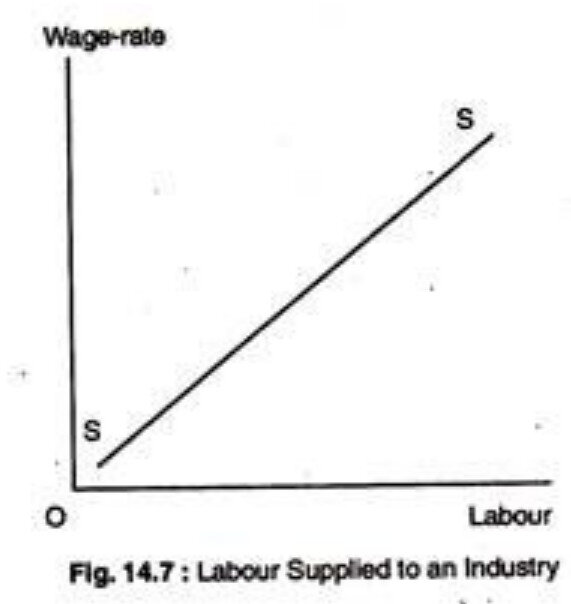
There Is No Teacher Shortage
The problem isn’t that there are too few teachers, it’s that states are unwilling to pay the market rate…
Today, the New York Times reports that some school districts are addressing ongoing “teacher shortages” by importing teachers from abroad, recruiting from countries like the Philippines because immigrants are willing to work for lower salaries. U.S. teachers have been frustrated with their working conditions recently, with some saying “they have had to move in with their parents, apply for food stamps and pay out of pocket for classroom essentials like graph paper and science supplies.” (Hence the sudden wave of teacher walkouts in red states.) But the Times says that Filipino recruits are easier to please, even though these immigrants often have to pay exorbitant sums to the companies that exploi—uh, recruit them. One Filipino teacher “said he used savings and a bank loan to pay $12,500, about three years’ worth of his salary in the Philippines, to Petro-Fil Manpower Services” in exchange for the promise of a job in America.
In recent months you might have heard about a “teacher shortage” in the United States. Forbes says the shortage “is one of the gravest problems facing our schools” and that “rising student numbers, low retention rates and difficulties in recruiting new teachers are creating a shortfall of crisis proportions.” Randi Weingarten, head of the American Federation of Teachers, has also used the term, criticizing the use of international recruitment “as a way to solve the teacher shortage.” The Washington Post has reported that state government officials of both parties have taken drastic steps to address the Teacher Shortage:
In response, policymakers have taken steps to boost the supply of teachers. In December, Virginia Gov. Terry McAuliffe (D) passed emergency regulations designed to alleviate what he called the “growing crisis” of a statewide teacher shortage by streamlining education requirements for new teachers. Lawmakers in Arizona, Illinois and Minnesota recently took steps to increase the number of new teachers by lowering the teacher licensure requirements. States such as Oklahoma have staffed classrooms by providing record numbers of temporary emergency certifications. And, motivated in part by a call to ameliorate teacher shortages, New York state recently allowed charter schools to certify their own teachers and dropped literacy tests for teacher candidates.
All of this is puzzling, because there is no teacher shortage in the United States. Instead, state governments are simply unwilling to improve salaries and working conditions to the point where enough people want to be teachers. It’s not that there are too few people who can teach, but that states are unwilling to pay the market rate for teacher labor. You can call this a shortage, of course. But the term implies that qualified candidates simply do not exist, and that’s not true. There are plenty of people qualified to be teachers. They just don’t enter the profession, because states are refusing to compensate them adequately for their services. If this is a “shortage,” then I could say there was a “bicycle shortage” in the United States if I was unwilling to pay more than $5 for a bicycle and nobody would sell me one. It would certainly be true, in that situation, that there is a “shortage” of bicycles available to me. But that has nothing to do with the overall supply of bicycles, of which there are still plenty. (Or I could say there was a “painter shortage” because nobody is willing to paint my house for nine cents while I shout abuse at them.)
If you offered an annual salary of $1 million to prospective teachers, you’d have plenty of extraordinary applicants to choose from. People would be leaping at the chance to be a teacher. You’d have the country’s most qualified college professors lining up to teach middle schoolers. This is because of the labor supply curve:

Pay more money, get more applicants. It doesn’t actually have to be $1 million. It would be enough to make teaching slightly more rewarding and better paying than the other jobs that a qualified person could get. But at the moment, teaching sucks, so nobody wants to do it. In the New York Times report about immigrant teachers, school districts say they “have few other options because they can’t find enough American educators willing to work for the pay on offer.” Well, yes, you have “few other options” given the “pay on offer.” But there is another option: increase the pay on offer!
This is such elementary economics that you’d think it wouldn’t need to be said. But look at the Washington Post report on how states are responding to the “shortages.” They notice that they aren’t getting many applicants, and what do they do? They reduce the job requirements! Instead of saying “We don’t have enough teachers, clearly we’re not paying the market rate,” they say “We don’t have enough teachers, clearly there are just too few qualified people, therefore we should eliminate the literacy requirement so that anyone can be a teacher.” You can see what this leads to: teachers remain low-paid and overworked, except now they’re illiterate and the schools get worse. The state “solutions” to the “teacher shortage” do not actually increase the number of teachers, if we want to define “teacher” as “someone who is actually capable of teaching.” They just widen the category so that a teacher is “anybody willing to sit in a room for six hours while kids look at the ceiling.”
Of course, higher pay isn’t everything. If it’s still a crappy job where people are stressed out and unappreciated, you might have a tough time finding people. (Although again, if you increased the pay sufficiently you’d find qualified people even if the job was terrible.) But the measures the Washington Post cites don’t address working conditions or pay, even though these are core factors that will either bring people into the profession or drive them away from it. (An interesting parallel case is the American “doctor shortage.” Again, there is no doctor shortage. In wealthy communities, there are doctors everywhere. There are too few doctors in poor communities, though, because poor people can’t afford doctors and being a poorly-compensated doctor in an isolated rural community isn’t that attractive a career. It could easily be an attractive career, though, if we subsidized it sufficiently. These shortages are an unwillingness to invest in creating attractive jobs, not a lack of potential labor.)
Discussions of teacher shortages have dismissed the simple economic point. Here’s the Atlantic talking about state proposals to raise pay in order to increase recruitment:
But it’s hard to say whether such proposals will ultimately have long-lasting impact on the general teacher shortage. Surveys suggest that although teachers’ job satisfaction has declined significantly in recent years, their perceptions about pay have hardly changed; factors beyond money contribute to the recruitment-and-turnover problems. In places already struggling with shortages and those resorting to mass emergency certifications, the challenge is finding new teachers who are qualified, competent, and dedicated to the profession. Achieving this goal, researchers say, is complicated—something that a few extra hundred, or even thousand, dollars alone won’t solve. “If you want to improve the pipeline of new teachers, you have to start early,” said Sean Corcoran, an associate professor of educational economics at NYU who has conducted extensive research on the U.S. teaching force. “Raising salaries today is not going to increase the quality of recruits tomorrow.”
Corcoran is wrong. Raising salaries today could increase the quality of recruits instantaneously, if you raised them enough. If an extra “few hundred” or “thousand” dollars won’t help, that’s not because this is about “more than money” but because teachers are significantly underpaid. Try doubling their pay. Then I bet you’d see quite a few bright and qualified new applicants all of a sudden! (Also: the fact that their “perceptions about pay” have hardly changed does not mean money doesn’t matter. If you don’t believe me, as I say, try offering enormous piles of cash to whoever is willing to be a teacher.)
The Times quotes a Phoenix-area school district’s human resources director justifying the importation of teachers: “In these times, you have to be innovative and creative in recruiting.” She may be right, if you take the “times” as a given. But the question is: why are we in times like these? Why has it become necessary to do this? And the answer is: because state governments are controlled by rich people, who do not care about children and are unwilling to make financial sacrifices so that teachers can have good careers and poor kids can have good schools. The “shortage” is not inevitable. It’s the product of austerity, and austerity is a policy choice. It’s depressing to me that the head of the teacher’s union would concede the idea that there is a “shortage.” I understand that she wants to pressure states to end the shortage by increasing pay, but we don’t have to use this propaganda term in order to make that argument. Like the Social Security “crisis,” this is a manufactured emergency that only exists because of inequality. Most of our problems, from too few doctors to too few teachers to too little money in the retirement fund, could be solved if wealth were distributed properly and fairly and governments were willing to give institutions the funding they actually needed in order to carry out their social missions.




